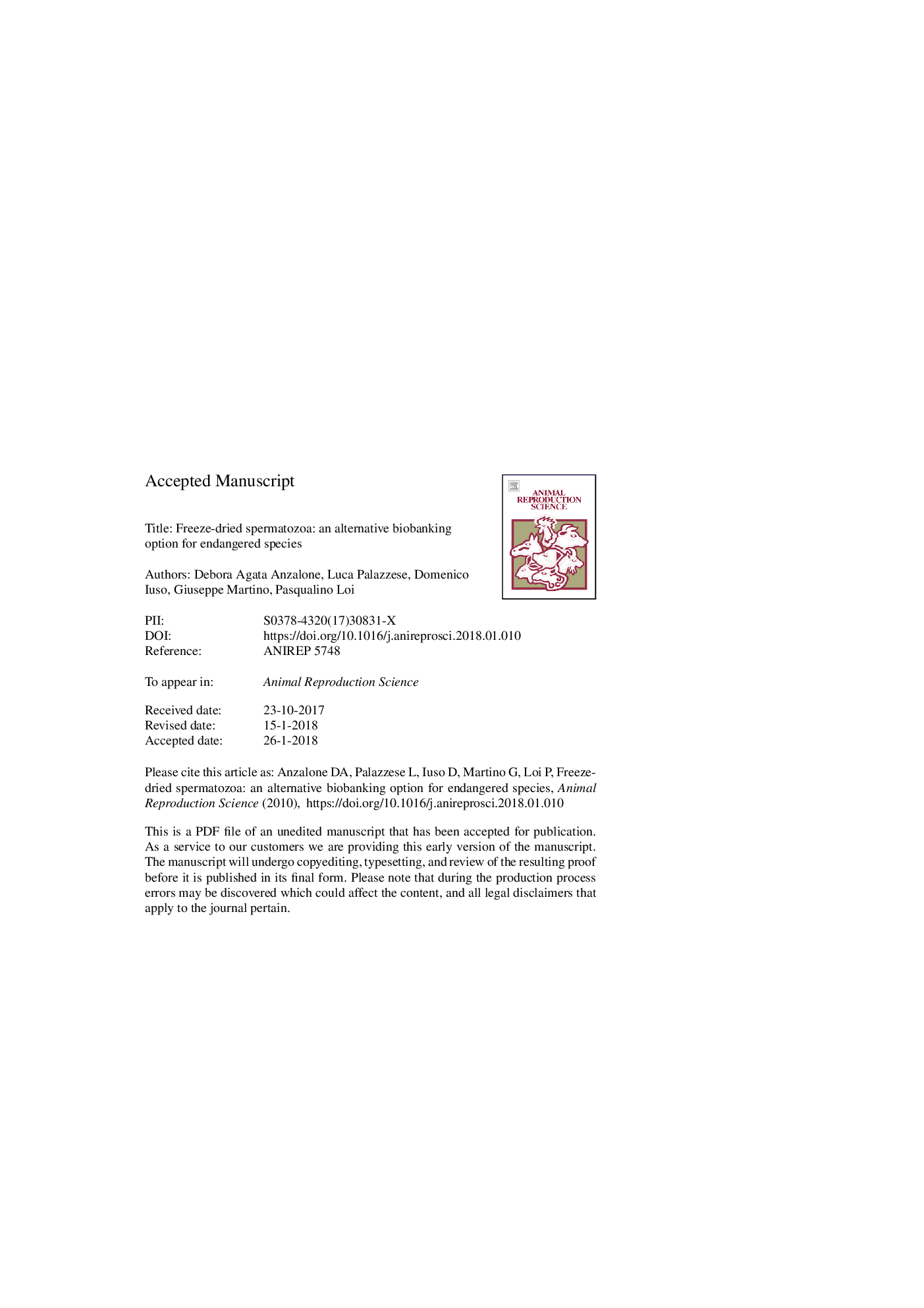| Article ID | Journal | Published Year | Pages | File Type |
|---|---|---|---|---|
| 8403995 | Animal Reproduction Science | 2018 | 21 Pages |
Abstract
In addition to the iconic wild species, such as the pandas and Siberian tigers, an ever-increasing number of domestic species are also threatened with extinction. Biobanking of spermatozoa could preserve genetic heritages of extinct species, and maintain biodiversity of existing species. Because lyophilized spermatozoa retain fertilizing capacity, the aim was to assess whether freeze-dried spermatozoa are an alternative option to save endangered sheep breeds. To achieve this objective, semen was collected from an Italian endangered sheep breed (Pagliarola), and a biobank of cryopreserved and freeze-dried spermatozoa was established, and evaluated using IVF (for frozen spermatozoa) and ICSI procedures (for frozen and freeze-dried spermatozoa). As expected, the fertilizing capacity of cryopreserved Pagliarola's spermatozoa was comparable to commercial semen stocks. To evaluate the activating capability of freeze-dried spermatozoa, 108 MII sheep oocytes were subjected to ICSI, and allocated to two groups: 56 oocytes were activated by incubation with ionomycin (ICSI-FDSa) and 52 were not activated (ICSI-FDSna). Pronuclear formation (2PN) was investigated at 14-16â¯h after ICSI in fixed presumptive zygotes. Only artificially activated oocytes developed into blastocysts after ICSI. In the present study, freeze-dried ram spermatozoa induced blastocyst development following ICSI at a relatively high proportion, providing evidence that sperm lyophilization is an alternative, low cost storage option for biodiversity preservation of domestic species.
Related Topics
Life Sciences
Agricultural and Biological Sciences
Animal Science and Zoology
Authors
Debora Agata Anzalone, Luca Palazzese, Domenico Iuso, Giuseppe Martino, Pasqualino Loi,
